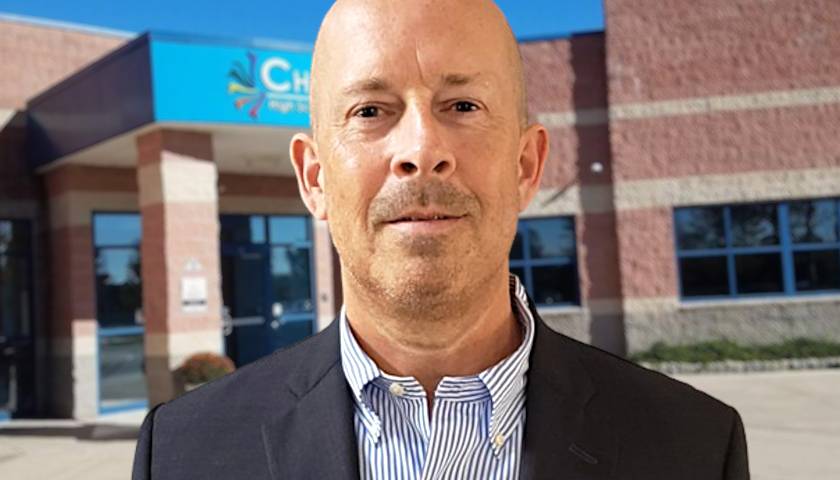by Kevin Killough
Paul Tice, senior fellow for the National Center for Energy Analytics, took the opinion pages of the Wall Street Journal to criticize the climate change curriculum in New Jersey public schools.
The educational materials, Tice explained, are not just found in sections of science courses, but in all school subjects. Districts are encouraged to insert lessons on climate change into English language arts and mathematics. In foreign language classes, students discuss the impacts of climate change “on the target language of the world.”
In the state’s Visual and Performing Arts standards, students are required to “Research global issues, including climate change, using multiple research methods to inform original dances expressed through multiple genres, styles, and varied cultural perspectives.”
To support the state’s climate curriculum, the New Jersey Department of Education points educators toward resources that provide only positive views of the potential of wind and solar to replace fossil fuels. “New Jersey’s climate curriculum is pure indoctrination,” Tice (pictured above) wrote in the Journal column.
Nationwide “climate alarm”
Dr. Sterling Burnett, Director of the Arthur B. Robinson Center on Climate and Environmental Policy at the Heartland Institute, told Just the News that this type of climate education is common across the country, and it’s been going on for years.
“It’s all got climate alarm built into it. It doesn’t question the idea that humans are causing catastrophic climate change, despite the fact that that’s not supported by the data or the evidence,” Burnett said.
Some states have attempted to include in the curriculum taught in public schools different perspectives on climate change. Last year, Florida’s Board of Education approved the use of videos produced by the conservative Prager University Foundation in the state’s public schools.
Legacy media outlets were critical of the decision. The Guardian reported that kids would be exposed to educational materials that “portray solar and wind energy as environmentally ruinous,” even though there are many reasons to be concerned about the environmental impacts of wind and solar energy.
The Guardian also quoted experts worried that kids in Florida would be exposed to “messages of support for fossil fuels and doubts for renewable energy resources.”
Politico quoted PragerU CEO Marissa Streit stating that the “climate is always changing,” to which the reporter was compelled to refer to the statement as “repeating a climate-denial motto.” Streit’s statement is scientifically accurate.
Among other points, the PragerU videos challenge the belief that climate change poses a risk to the survivability of the human race, and that wind and solar are a good idea for developing countries.
Other attempts to provide kids with different perspectives on climate change and energy have also been rebuked. In April 2023, the CO2 Coalition, whose members include a Nobel laureate, purchased a booth at the National Science Teaching Association’s annual convention in Atlanta. The group distributed “Simon The Solar-Powered Cat,” a comic book that explains the process of photosynthesis, which benefits from carbon dioxide. The purpose of the lesson is to dispute the demonization of the greenhouse gas as inherently destructive and dangerous.
The association found the materials so offensive that they kicked the CO2 Coalition out of the convention.
How to think
The Heartland Institute last year launched an initiative to provide education materials that challenge the idea that humans are causing catastrophic climate change. “Climate at a Glance” uses government sources to provide perspectives disputing the “climate crisis” on a range of topics from extreme weather to polar bears. They also created a downloadable app for the lessons.
Burnett, who helped author the materials, said the Heartland mailed out 7,000 free copies of the printed version. He said, while not all the educators who received the copies reacted positively to the materials, the Heartland received a lot of “good feedback”on it from teachers.
“The thing we’ve been pushing all along is that science is not teaching what to think. When you’re getting your science education, especially your basic education in the early grades, it’s teaching how to conduct science. It’s teaching how to think, not what to think,” Burnett said.
He said all the climate education in public schools teaches that the “climate crisis” is settled science and that there’s no legitimate dispute about it. Burnett said the whole idea of “consensus science” is problematic.
“There was a consensus at one time that the universe revolved around the Earth. That was wrong. There was a consensus that the Earth was flat. That was wrong. There was consensus that diseases were caused by humors in the body, and you just need to balance the humors. It was wrong,” Burnett said.
Messaging fails
While most states are keeping educational materials in schools uniformly in support of a climate crisis perspective, polls are showing that young people are becoming less inclined to accept it. A recent Monmouth University poll found in the last few years, a 17 percentage point drop in the number of people ages 18 to 34 who believe that climate change is a very serious issue. Many of those polled would have recently graduated from high school.
A similar phenomenon happened with the Drug Abuse Resistance Education (DARE) program, which was especially prevalent in schools throughout the 1980s and 1990s. While the program had the well-intentioned goal of getting kids to not use drugs, it followed a lot of the sensational messaging of the 1980s. Studies later found that the program was ineffective, and one study found that students who went through the program had higher rates of drug use.
In 2009, the program was redesigned to be geared more toward “being honest and safe and responsible.”
Whether the new approach proves effective remains to be seen, but so far, it does appear kids don’t always respond to heavy-handed messaging.
– – –
Kevin Killough is a reporter for Just the News.
Photo “Paul Tice” by NYU STERN. Background Photo “CharterTech High School” by New Jersey Department of Education.




